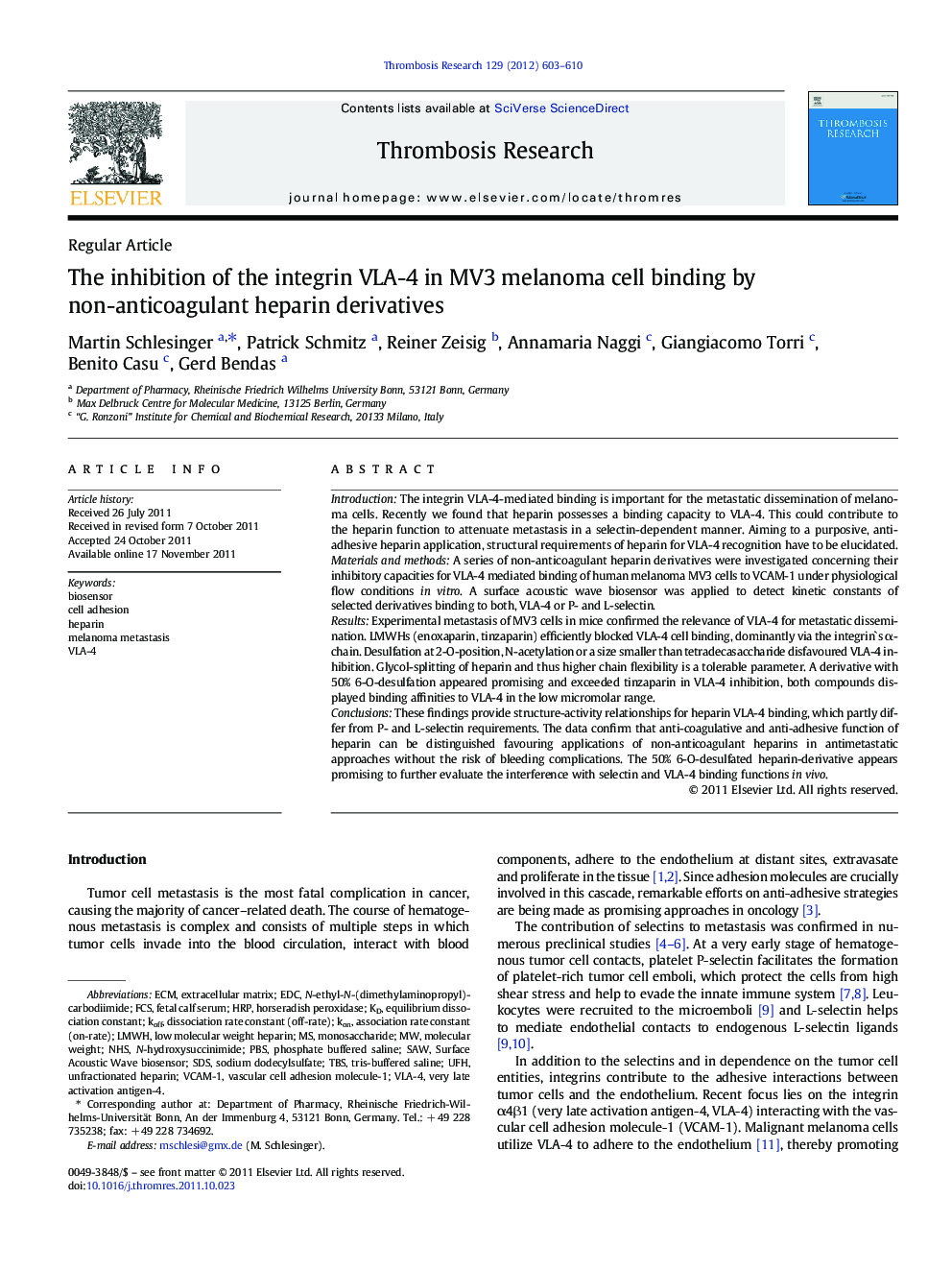| کد مقاله | کد نشریه | سال انتشار | مقاله انگلیسی | نسخه تمام متن |
|---|---|---|---|---|
| 6003310 | 1183010 | 2012 | 8 صفحه PDF | دانلود رایگان |

IntroductionThe integrin VLA-4-mediated binding is important for the metastatic dissemination of melanoma cells. Recently we found that heparin possesses a binding capacity to VLA-4. This could contribute to the heparin function to attenuate metastasis in a selectin-dependent manner. Aiming to a purposive, anti-adhesive heparin application, structural requirements of heparin for VLA-4 recognition have to be elucidated.Materials and methodsA series of non-anticoagulant heparin derivatives were investigated concerning their inhibitory capacities for VLA-4 mediated binding of human melanoma MV3 cells to VCAM-1 under physiological flow conditions in vitro. A surface acoustic wave biosensor was applied to detect kinetic constants of selected derivatives binding to both, VLA-4 or P- and L-selectin.ResultsExperimental metastasis of MV3 cells in mice confirmed the relevance of VLA-4 for metastatic dissemination. LMWHs (enoxaparin, tinzaparin) efficiently blocked VLA-4 cell binding, dominantly via the integrin`s α-chain. Desulfation at 2-O-position, N-acetylation or a size smaller than tetradecasaccharide disfavoured VLA-4 inhibition. Glycol-splitting of heparin and thus higher chain flexibility is a tolerable parameter. A derivative with 50% 6-O-desulfation appeared promising and exceeded tinzaparin in VLA-4 inhibition, both compounds displayed binding affinities to VLA-4 in the low micromolar range.ConclusionsThese findings provide structure-activity relationships for heparin VLA-4 binding, which partly differ from P- and L-selectin requirements. The data confirm that anti-coagulative and anti-adhesive function of heparin can be distinguished favouring applications of non-anticoagulant heparins in antimetastatic approaches without the risk of bleeding complications. The 50% 6-O-desulfated heparin-derivative appears promising to further evaluate the interference with selectin and VLA-4 binding functions in vivo.
Journal: Thrombosis Research - Volume 129, Issue 5, May 2012, Pages 603-610